Well, it certainly didn't take long for May to live up to its reputation and deliver a rarity of the highest standard: a stunning male Citril Finch at the east end of Burnham Overy Dunes in Norfolk. The only occurrence since Britain's first on Fair Isle for six days in 2008, the bird was stumbled upon and news swiftly released in mid-morning on Sunday 10th, allowing carloads from all over the country to arrive before it headed off to roost in the evening. Although it only showed for relatively short intervals before repeatedly vanishing amid the adjacent pines, anyone willing to sit it out for a short while was duly rewarded on its first day, but an early rise was necessary to connect on the Monday, as those who arrived after the bird was last seen at around 06:00 learned the hard way. Citril Finch is a species with low vagrancy potential that tends not to migrate very far at all, so a mainland bird was perhaps not anticipated so soon after Fair Isle's, but it was nonetheless most welcome.
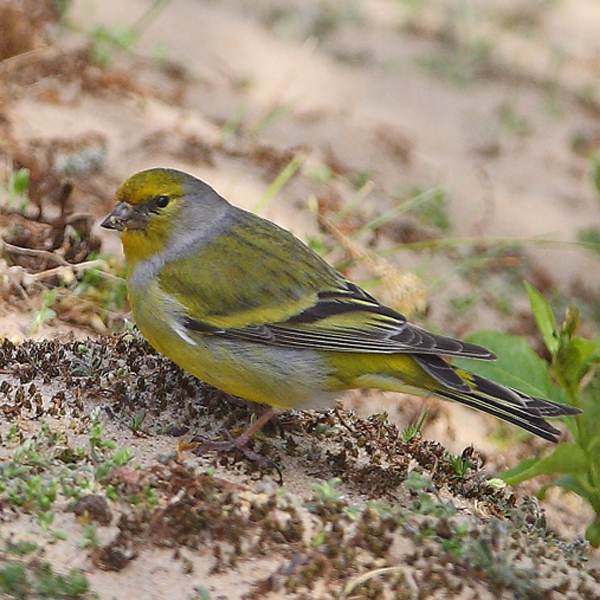
Citril Finch, Burnham Overy, Norfolk (Photo: Rob Wilson)
Citril Finch, Burnham Overy, Norfolk (Video: Pete Hines)
Citril Finch, Burnham Overy, Norfolk (Video: Mike Alibone)
There was some tidy consolation on offer for those arriving too late for the finch on Monday, as those who spent the morning searching Burnham Overy were well placed to skip along the coast to Blakeney Point upon news just after midday of a singing male Moltoni's Warbler. Favouring the plantation at the end of the point, it was loosely accompanied by a female subalpine warbler, which was also apparently heard to give the characteristic 'churr' call of moltonii and looked the part in terms of plumage; both birds arrived and departed in tandem (there was no sign of either the next day). With it being a new split and this the first nailed-on and accessible mainland bird(s), many people embarked on the testing three-mile trek across the shingle to familiarise themselves with the taxon.
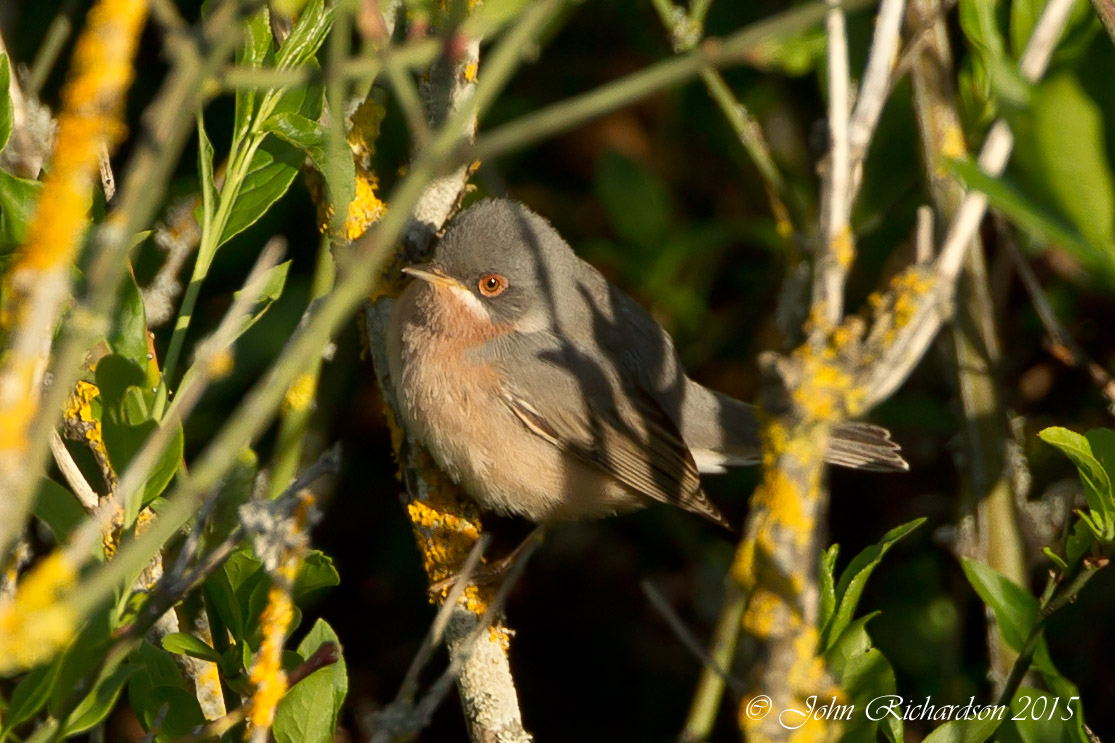
Moltoni's Warbler, Blakeney Point, Norfolk (Photo: John Richardson)
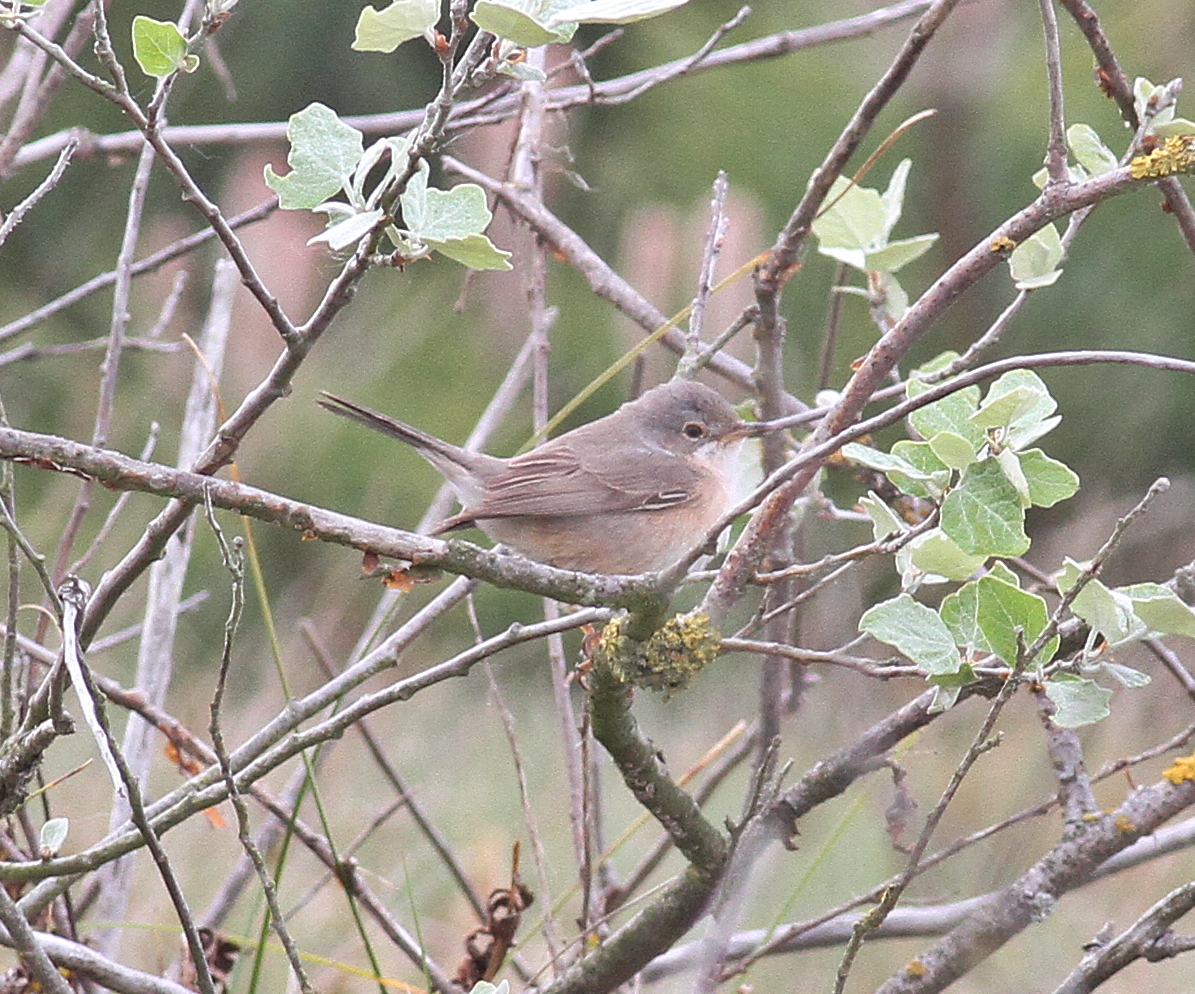
Moltoni's Warbler, Blakeney Point, Norfolk (Photo: Jake Gearty)
Moltoni's Warbler, Blakeney Point, Norfolk (Video: frogdiet)
Nearctic species have been curiously prominent among the array of vagrants recorded so far this year, and another was added to the national list this week when a Dark-eyed Junco was found in a garden at Toab, Shetland, on 11th. Singing and showing well, the male bird represented Shetland's fifth record, and the first since 2003. Elsewhere in Scotland, the first-summer drake Harlequin Duck was, of course, still on the River Don in Aberdeen all week although it is now said to be maimed. Hampshire's slippery Greater Yellowlegs actually showed rather well at Titchfield Haven for most of the day on 9th but otherwise lurked completely out of sight. The adult Pacific Diver was clocked once again in Mount's Bay, seen this time from the Scillonian III as it came in to dock at Penzance in the evening.
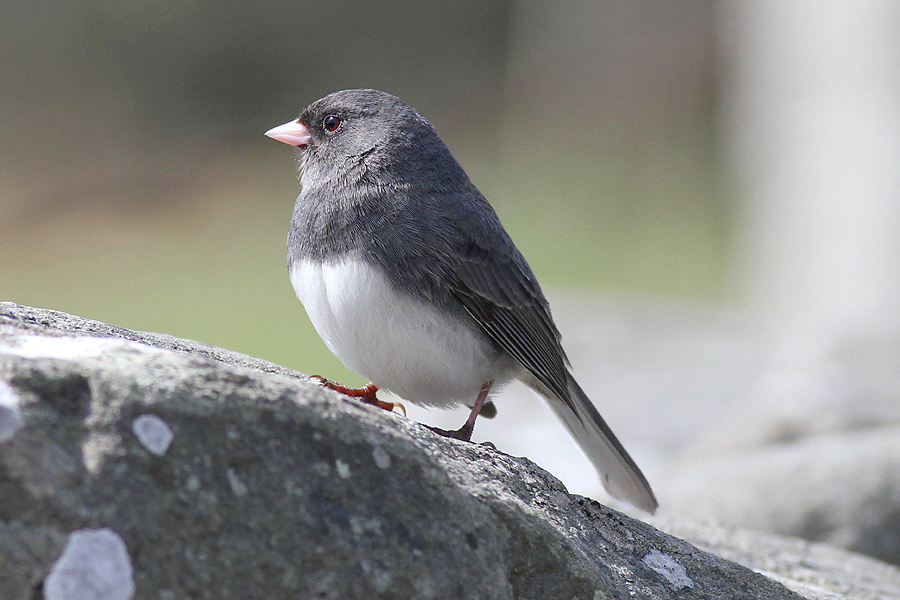
Dark-eyed Junco, Toab, Mainland, Shetland (Photo: Rob Fray)
Dark-eyed Junco, Toab, Mainland, Shetland (Video: Shetland Wildlife)
There was a particularly strong taste of the continent in the air this week, with a myriad of overshoots and drift migrants being picked up mainly on southern and eastern coasts. The pick of these included a Gull-billed Tern at Swords Estuary, Dublin, on 6th and two Squacco Herons: one at Bottoms, Trethewey, Cornwall, from 6th to 11th and another looking rather out of place at Prawle Point from 9th to 12th. Night Herons remained plentiful, with five on St. Mary's to 10th (with three still on 12th) and others at Seaton Marshes, Devon, on 8th and Burgh-le-Marsh, Lincs, on 10th and 11th. An immature Purple Heron was seen in flight at Lodmoor, Dorset, on the evening of 12th. Lone Black-winged Stilts were recorded at Grove Ferry, Kent, from 11th to 12th and at a private site in Lincolnshire from 5th to 9th.

Squacco Heron, Prawle Point, Devon (Photo: Tony Marchese)
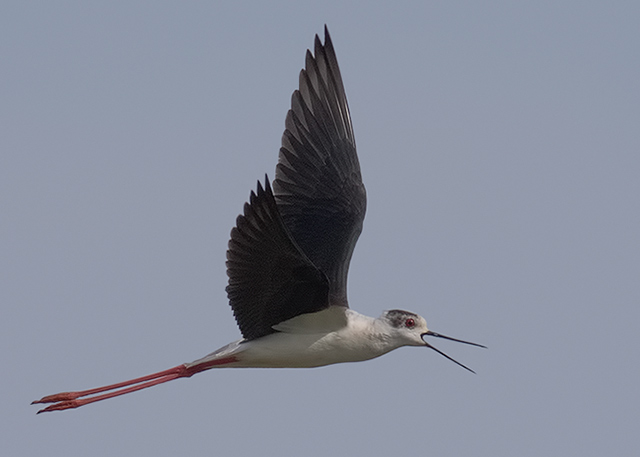
Black-winged Stilt, Grove Ferry NNR, Kent (Photo: Steve Ashton)
Two European Bee-eaters arrived off the sea at St. Leonard's on Sea, E Sussex, on 10th and the Grantham area of Lincolnshire also had a pair on 12th. All other sightings this week involved singles, the most notable being one photographed in a garden near Warrington, Cheshire, on 6th and one over Farmoor Reservoir, Oxon, on 10th, with others at Winterton Dunes, Norfolk, and Corton and Covehithe Broad (both Suffolk) the same day. An Alpine Swift lingered over Spurn, E Yorks, for a short while on 7th; one sought a roost site in Ilkley town centre in West Yorkshire on 8th, and another was at Pugney's CP (also W Yorks) late on 9th. Ireland managed to turn one up, too: one passed through Tarmon, Mayo, on 12th, in what is continuing to be a bumper year for the species. 13 Hoopoes included inland birds on a football ground at Stratford-upon-Avon on 7th, and at Sutton-in-Ashfield, Notts, and Wichenford, Worcs, both on 12th; six Wrynecks were shared between Cromer and Holme Dunes, Norfolk; Thursley Common, Surrey; St. Martin's, Scilly; Barns Ness, Lothian;, Holy Island, Northumberland; and Fair Isle, Shetland.

Wryneck, Holy Island, Northumberland (Photo: Andy Mould)
Turning to passerines, yet another accommodating Red-throated Pipit made itself popular during the week, this one at Seaton Common, Cleveland, from 10th to 12th, and was gladly lapped up by county listers. Shetland's Tawny Pipit stayed put on Fair Isle to 6th and one pitched up at Portland, Dorset, on 9th, remaining to the next day. We received reports of Short-toed Lark from St. Martin's, Scilly, and Fair Isle, Shetland, both from 8th to 11th. In Cornwall, Porthgwarra's Woodchat Shrike reappeared on 8th and lingered to 12th and Ballycotton, Cork, boasted a smart male from 7th to 11th, while Gugh, Scilly, had one on 12th; less expected was a report of a male Red-backed Shrike in a Portnalong garden on Skye, Highland, on 7th.

Red-throated Pipit, Seaton Common, Cleveland (Photo: Ron Hindhaugh)

Woodchat Shrike, Ballycotton, Cork (Photo: Ronan McLaughlin)
One of last week's Red-rumped Swallows, the bird in East Park, Hull, made it into this week before it was picked off by a Hobby on 7th. Ferry Meadows, Cambs, had another well-twitched bird from 10th to 12th, while others were decidedly more fleeting at Selsey Bill, W Sussex, and Covenham Reservoir, Lincs, on 7th; Porthcurno, Cornwall, on 9th; Stolford, Somerset, on 10th; Beacon Ponds, E Yorks, on 11th; and Cley-next-the Sea, Norfolk, on 12th. There appeared to be a small Serin arrival on 7th, including singles at Happisburgh, Norfolk; Gibraltar Point, Lincs; and Sandy Point, Hants. None of them chose to hang around. A tally of 35 Golden Orioles were littered from the Isles of Scilly to Shetland, while seven Grey-headed Wagtails included a male at Holme Pierrepont, Notts, on 7th. The year's first Melodious Warbler turned up at Thorpeness, Suffolk, on 8th.
The seemingly immovable Glossy Ibis was in its favourite wet field at Gonalston, Notts, to at least 7th, and the Cattle Egret was seen again at Warehorne, Kent, on 11th. How many of this week's White Storks will have been genuinely wild is unclear, but one mingling with captive congeners at Flamingo Land in Kirby Misperton, N Yorks, on 7th had apparently been there for a few days, and sightings at Castle Eden Dene and Washington WWT, both Durham, presumably involved the same bird on 10th. On 12th, a White Stork on a lamp post at Acle, Norfolk, was most likely one of the escapees seen in the area earlier in the year.
The scrapes at Low Newton-by-the-Sea came up trumps with both a Lesser Yellowlegs and a Pectoral Sandpiper on 11th; other 'Pecs' included the Marshside, Lancs, bird again on 10th and a new bird at the National Wetland Centre, Carmarthenshire, on 11th. A male Kentish Plover was picked up among Ringed Plovers on the beach at Dornoch, Highland, on 7th and stayed put to 10th. Some light Grey Phalarope passage just about registered, with three seen from the Uig–Lochmaddy ferry on 8th and a lone bird briefly at Stocks Reservoir, Lancs, on 10th. We reported a grand total of 24 Temminck's Stints: the bulk were in East Anglia, but three graced Staines Reservoir, Surrey, on 7th and individuals were at Rutland Water, Leics, and Priory CP, Beds, on 8th, the former lingering to the next day.

Lesser Yellowlegs and Pectoral Sandpiper, Low Newton-by-the-Sea, Northumberland (Photo: Tim Dean)
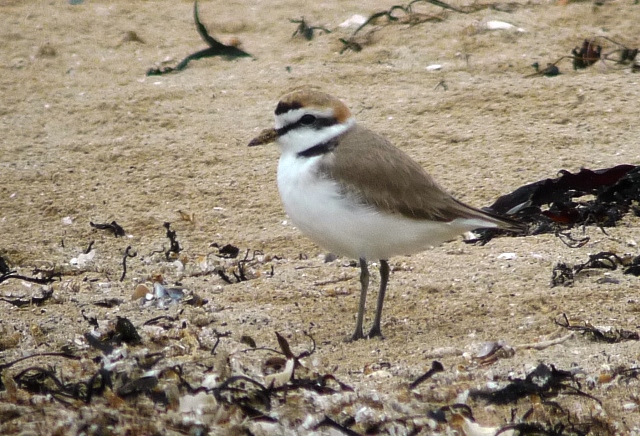
Kentish Plover, Dornoch, Highland (Photo: Hugh Addlesee)
Eight White-billed Divers were off the Aberdeenshire coast and singles were reported off Cullen, Moray/Nairn, and in Water Sound, Orkney. In Hampshire, Southampton held onto its first-summer Bonaparte's Gull to 12th and others of the same age were identified at Bowling Green Marsh, Devon, on 9th–10th and at Chesil Cove, Dorset, for a short time on 8th. An adult Bonaparte's flew out over Llanrhidian Marsh, Glamorgan, on 12th. The long-staying Ring-billed Gull visited the Hayle Estuary, Cornwall, to 12th; Burton Mere Wetlands, Cheshire, produced another on 7th and what may have been the same bird appeared at Crosby Marine Park on Merseyside on 9th.

Bonaparte's Gull, Southampton, Hampshire (Photo: Steve Copsey)
In West Yorkshire, the famous nasal-saddled drake Lesser Scaup hopped between Wintersett Reservoir and adjacent Cold Hiendley Reservoir to 12th. On 6th the drake Surf Scoter was still off Musselburgh, Lothian. Black Brants were still at Frampton Marsh, Lincs, and Spurn, E Yorks, this week, as were Green-winged Teal on the Ouse Washes, Cambs, and on North Uist, Outer Hebrides, and the drake King Eider on the Ythan Estuary, Aberdeenshire).
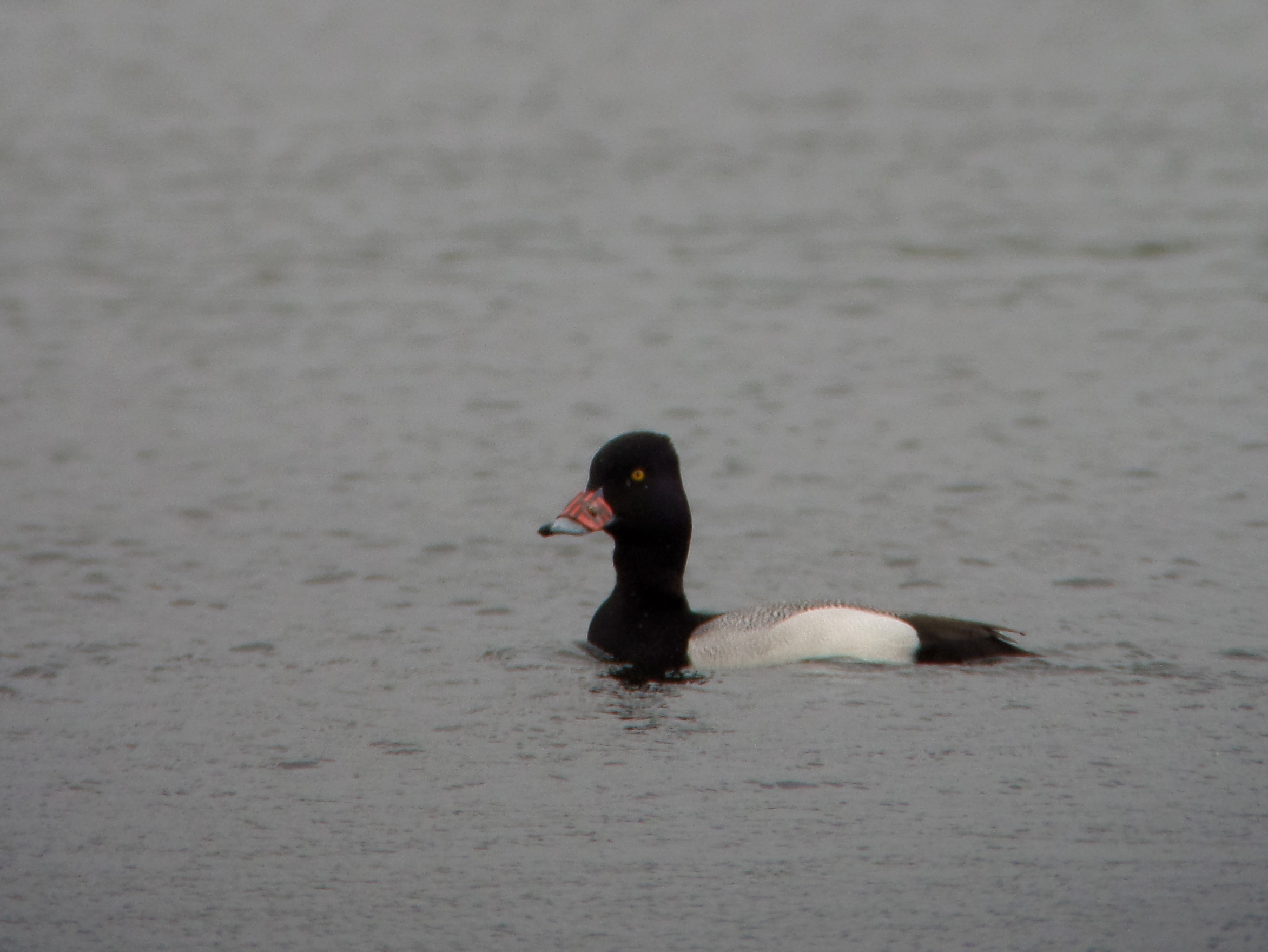
Lesser Scaup, Wintersett Reservoir, West Yorkshire (Photo: Daniel Branch)
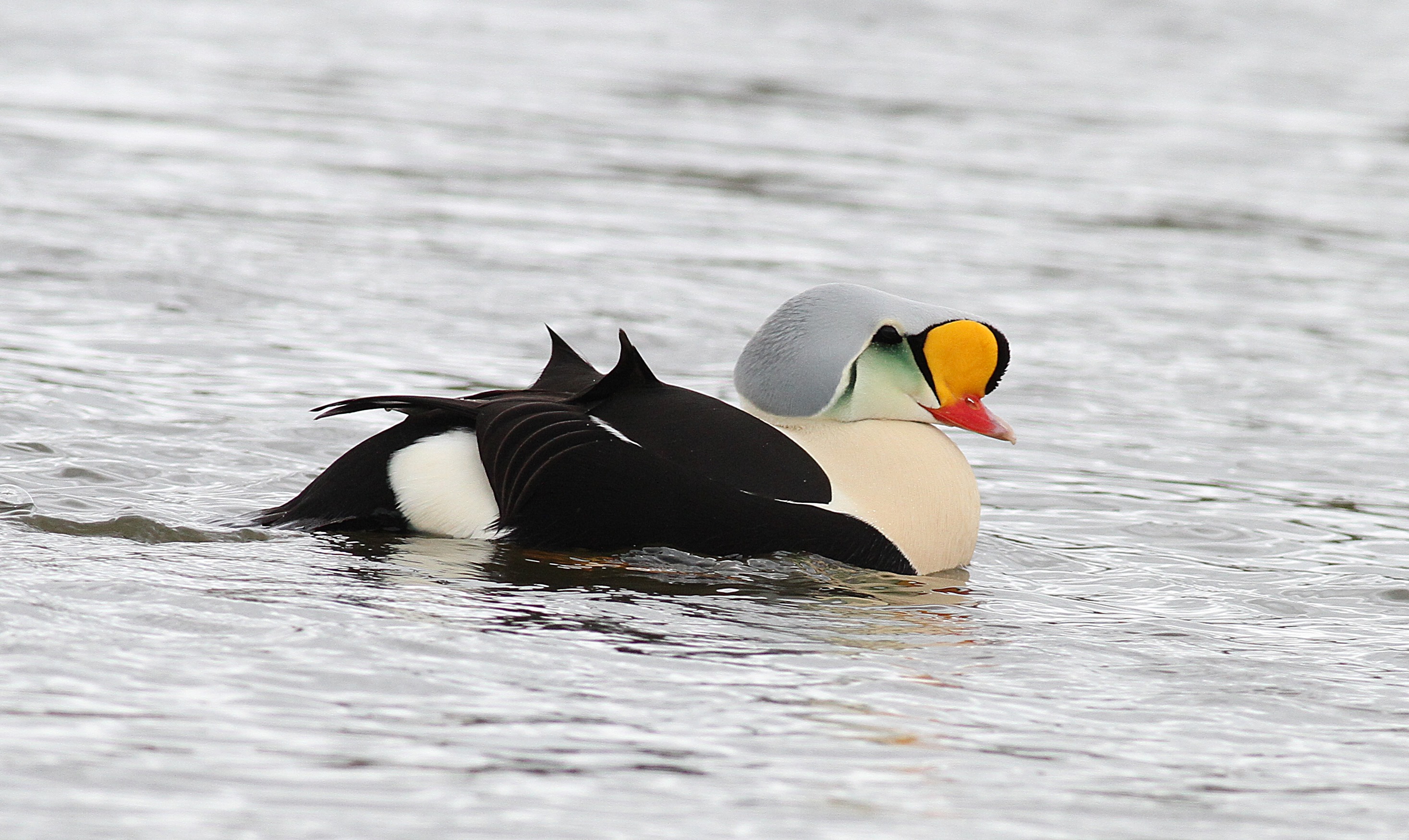
King Eider, Ythan Estuary, Aberdeenshire (Photo: Jake Gearty)
A Snowy Owl enlivened one birder's drive to work through Cuilcagh Mountain, Fermanagh, on 7th, but it soon vanished into the hills. Lingering Rough-legged Buzzards were reported from Breydon Water and Winterton Dunes (both Norfolk) and Carlton Marshes, Suffolk, while migrants were picked up on North Ronaldsay, Orkney; Fair Isle, Shetland; and at Cabrach, Moray/Nairn. The Montagu's Harrier pair were still on territory at Blacktoft Sands, E Yorks, and a ringtail flew over Littlestone-on-Sea, Kent, on 7th. Honey Buzzards went on trickling through in small numbers, with five birds seen from Kent to Dumfries and Galloway, but much more noticeable was the building skua passage through the Outer Hebrides, which grew to a spectacular scale with a peak count of 1,307 Long-tailed Skuas and 353 Pomarine Skuas through Aird an Runair, North Uist, on 12th.

Snowy Owl, Cuilcagh Mountain, Fermanagh (Photo: Brad Robson)

Montagu's Harrier, Blacktoft Sands RSPB, East Yorkshire (Photo: Dennis Morrison)
Western Palearctic News
An adult male White-crowned Black Wheatear was photographed in Poland at Winduga, Lodz, on 12th, making for the country's first record; elsewhere in the country a White-tailed Plover was at Zukowo from 8th to 11th. In Spain, A Sharp-tailed Sandpiper turned up at Tancat de Milia, Sollana, Albufera de Valencia, on 11th and was still there the next day.
Sweden enjoyed its first Pacific Diver at Stenshuvud, Stenshuvud, Skåne, on 8th. A Pallid Swift at Karmoy, Rogaland, was the ninth for Norway and a singing male Semi-collared Flycatcher at Padurea Resca, Olt, was the sixth for Romania. Latvia had its fifth Red-rumped Swallow at Kolka, Dundaga and a first-summer Lammergeier was at Niedersachsen, Germany, on 7th.
Germany's Black-browed Albatross paid a fleeting visit to Hirtshals harbour, Denmark, on 7th, while back on Heligoland a Rufous-tailed Rock Thrush turned up on 6th. A Little Bustard was noted in Finland at Ylikyla, Rovaniemi, the same day.
Photo of the Week, 6–12 May

Cuckoo, Reculver, Kent (Photo: Steve Ashton)
Common Cuckoo is a notoriously difficult species to photograph well, writes Steve Young, with local knowledge and plenty of patience usually needed to achieve anything more than a record-type shot.
Kent photographer Steve Ashton has therefore done exceptionally well to take this superb flight shot. Using a 400mm lens and a 1/3200th second shutter speed to freeze the action, he managed to capture the bird side-on as it flew by with bill open, showing both flanks and upperwing.
Nicely lit with a highlight in the eye and a blue sky background, it's a winning image — congratulations to Steve on his well-deserved Photo of the Week.
Other notable images

Whimbrel, Bardsey Island, Gwynedd (Photo: Ben Porter)

Buzzard, Hardingham, Norfolk (Photo: Tim Barrett)

Red-rumped Swallow, Hull, East Yorkshire (Photo: Martin Standley)

Hobby, Lakenheath, Suffolk (Photo: Tom Melton)

Pheasant, undisclosed site, Norfolk (Photo: Matt Crosby)

Whitethroat, Saxlingham, Norfolk (Photo: Matt Crosby)

Dotterel, Danby Beacon, North Yorkshire (Photo: Martyn Sidwell)

Pied Flycatcher, undisclosed site, Shropshire (Photo: Tony Webb)

Manx Shearwater, Round Island, Isles of Scilly (Photo: Joe Pender)

Wood Warbler, Cambusbarron, Forth (Photo: Mike Thrower)

Nightingale, undisclosed site, Gloucestershire (Photo: Mick Colquhoun)
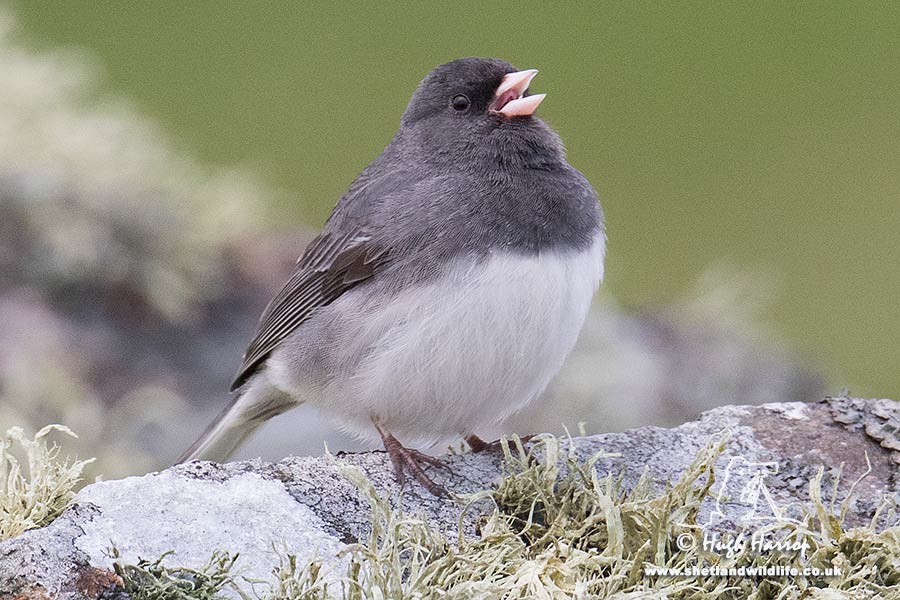
Dark-eyed Junco, Toab, Mainland, Shetland (Photo: Hugh Harrop)

Swift, Fillingham Lake, Lincolnshire (Photo: Col Scott)

